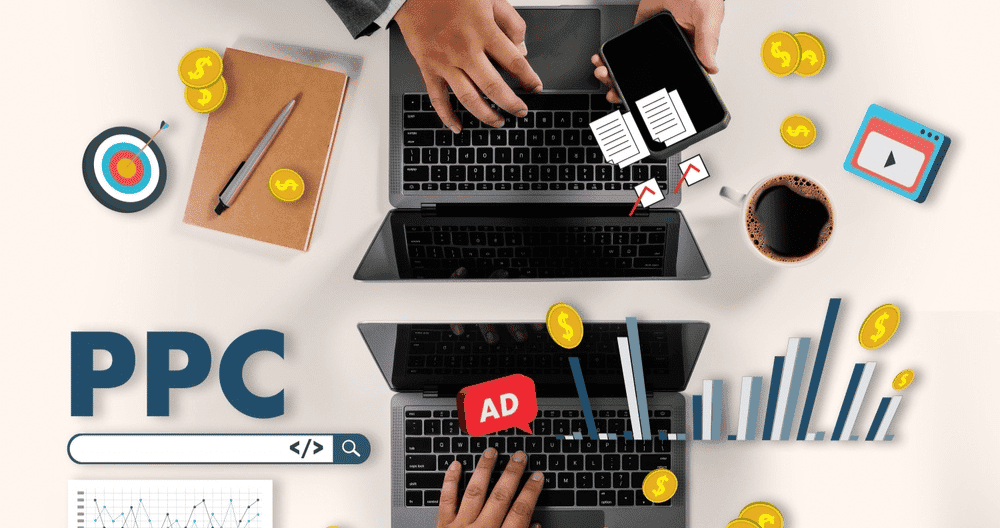Tips and Tricks for PPC :Google Ads is a powerful tool that can drive substantial traffic to your website. It increases brand awareness and boosts sales. Whether you’re a small business owner or a seasoned marketer, mastering Google Ads can significantly impact your bottom line. So let’s explore the world of Pay-Per-Click (PPC) advertising and uncover the secrets to Google Ads’ success.
Tips and Tricks for PPC
What is Google Ads?
Google Ads, once called Google AdWords, is a tool by Google where businesses can make ads for Google search and other Google sites. Advertisers offer money for keywords, and their ads show up when people search for those words.Wants to Learn PPC.
Importance of Google Ads for Businesses
Google Ads offers a direct path to potential customers. There are billions of searches performed daily on Google. So, it is obvious that you can reach a vast audience precisely when they’re looking for products or services like yours.
Setting Up Your Google Ads Account
Creating an Account
To get started, sign up for a Google Ads account using your Google credentials. Follow the procedure to set up your billing information, and you’ll be ready to create your first campaign.
Understanding the Dashboard
The Google Ads dashboard can be overwhelming at first glance. It includes sections for campaign management, performance metrics, billing, and settings. Familiarize yourself with these sections to navigate the platform effectively.
Keyword Research for PPC
Importance of Keywords in PPC
Keywords are the foundation of any PPC campaign. Deciding on the right words decides where and when your ads show up. Picking the best keywords helps your ads find the right people.
Tools for Keyword Research
Utilize tools like Google Keyword Planner, SEMrush, and Ahrefs to identify relevant keywords for your business. These tools help you understand how many people are searching for something, how many others are competing, and they also give suggestions for keywords.
How to Choose the Right Keywords
Choose words that match your business well, are searched a lot, and aren’t used by many others. Also, consider longer, more specific phrases, as they can work really well too.
Creating Effective Ads
Writing Compelling Ad Copy
The ad copy should be unique and compelling. Highlight the unique selling points of your product or service and address the needs of your target audience.
Importance of Ad Headlines
The headline is the first thing users see. Make it attention-grabbing and relevant to the search query. Use keywords in your headlines to improve relevance.
Using CTAs (Call To Action)
A strong CTA encourages users to take action. Phrases like “Buy Now,” “Learn More,” and “Get Started” can increase click-through rates and conversions.
Ad Extensions
Types of Ad Extensions
Ad extensions give extra details and make your ads easier to see. Common extensions include site link extensions, call extensions, and location extensions.
Benefits of Using Ad Extensions
Extensions improve ad visibility, increase click-through rates, and provide users with more reasons to click on your ad. They can also improve your ad’s Quality Score.
How to Implement Ad Extensions
To add extensions, you can navigate to the “Ads & extensions” section of your Google Ads account. This section allows you to choose the type of extension you want to add and fill in the required details for your ad extensions.
Targeting Your Audience
Demographic Targeting
Using demographic targeting helps you connect with people based on things like their age, gender, if they’re parents, and how much money they make. Customize your ads to match the interests of these different groups.
Geographic Targeting
Geographic targeting lets you show ads to users in specific locations. This is especially helpful for small local businesses or businesses focusing on particular areas.
Behavioral Targeting
Behavioural targeting focuses on users’ past behaviours, such as their search history, online activities, and purchase history. This assists in reaching out to people who are likely to make a purchase.
Setting Your Budget and Bids
Understanding CPC (Cost-Per-Click)
CPC means the money you give every time someone clicks your ad. Understanding CPC is crucial for managing your budget effectively.
Setting a Daily Budget
Determine how much you are willing to spend each day on your Google Ads campaigns. A well-defined budget ensures you don’t overspend and can sustain your campaigns over time.
Bid Strategies for Different Goals
Google Ads offers various bid strategies based on your campaign goals. Choose from options like manual CPC, enhanced CPC, target CPA (Cost Per Acquisition), and target ROAS (Return On Ad Spend).
Quality Score
What is a Quality Score?
Quality Score is a metric that reflects the quality and relevance of your ads, keywords, and landing pages. It increases your ad rank and CPC.
Factors Affecting Quality Score
Its key factors include click-through rate (CTR), ad relevance, and landing page experience. High-quality scores can lead to better ad positions and lower costs.
How to Improve Quality Score
The Quality Score can be improved by creating relevant ads, optimizing landing pages for user experience, and using targeted keywords. Regularly review and refine your campaigns.
A/B Testing
Importance of A/B Testing in PPC
A/B testing helps you compare two different versions of an ad to find out which one works best. It’s essential for optimizing your campaigns and improving results.
How to Conduct A/B Tests
Create two variations of an ad and run them simultaneously. Try out various titles, ad text, pictures, and calls to action to see what works best.. Monitor the performance and choose the best-performing ad.
Analyzing A/B Test Results
Look at metrics like CTR, conversion rate, and cost per conversion to determine the winning ad. Use these insights to inform future ad creations.
Monitoring and Optimization
Tracking Ad Performance
Keep an eye on how your ads are doing so you can find ways to make them better. Use Google Ads reports to track metrics like CTR, conversion rate, and CPC.
Key Metrics to Monitor
Concentrate on measurements that match what you want to achieve with your campaign. Common metrics include impressions, clicks, conversions, and ROI (Return On Investment).
Tips for Ongoing Optimization
Continuously test new keywords, ad copy, and targeting options. Adjust your bids and budgets based on performance data to maximize your results.
Using Negative Keywords
What are Negative Keywords?
Negative keywords prevent your ads from showing for specific search queries. This helps you avoid irrelevant traffic and reduce wasted spend.
Benefits of Using Negative Keywords
By excluding irrelevant searches, negative keywords improve ad relevance, increase CTR, and enhance overall campaign performance.
How to Implement Negative Keywords
Identify terms that are not relevant to your business. Add these as negative keywords in your Google Ads account to exclude them from triggering your ads.
Remarketing Strategies
What is Remarketing?
Remarketing targets users who have previously visited your website. It’s an effective way to re-engage potential customers and drive conversions.
Benefits of Remarketing
Remarketing keeps your brand top-of-mind, increases conversion rates, and provides a higher ROI compared to traditional advertising methods.
Setting Up a Remarketing Campaign
Create a remarketing list in Google Ads by adding a snippet of code (remarketing tag) to your website. Define your audience and create targeted ads to re-engage them.
Leveraging Google Analytics
Integrating Google Analytics with Google Ads
Link your Google Analytics and Google Ads accounts to access detailed insights into user behaviour and campaign performance.
Using Analytics Data to Improve Campaigns
Analyze data on user behaviour, traffic sources, and conversion paths to optimize your ads. Use these insights to refine your targeting and ad strategies.
Key Reports to Monitor
Monitor reports like the Audience Overview, Acquisition Report, and Behavior Flow to understand how users interact with your site and ads.
Common Mistakes to Avoid
Overspending on Ads
Set a clear budget and stick to it. Monitor your spending regularly to avoid overspending and ensure a positive ROI.
Ignoring Mobile Users
Ensure your ads and landing pages are mobile-friendly. With increasing mobile traffic, ignoring mobile users can significantly impact your campaign performance.
Poorly Defined Goals
Clearly define your campaign goals before launching. Whether it’s increasing sales, generating leads, or boosting brand awareness, having defined goals helps measure success.
Advanced Tips and Tricks for PPC
Using Automation and Scripts
Automation tools and scripts can streamline your campaign management. Use them to automate routine tasks, bid adjustments, and reporting.
Leveraging Google Ads Editor
Google Ads Editor is a powerful tool for managing large campaigns. It allows for bulk edits, offline work, and streamlined campaign management.
Exploring Advanced Bidding Strategies
Experiment with advanced bidding strategies like target CPA, target ROAS, and enhanced CPC to maximize your campaign performance.
Mastering Google Ads requires a blend of strategy, creativity, and continuous optimization. By understanding the fundamentals, leveraging advanced techniques, and avoiding common pitfalls, you can create successful PPC campaigns that drive results. Remember, the key to Google Ads success is ongoing learning and adaptation. use these Tips and Tricks for PPC.






